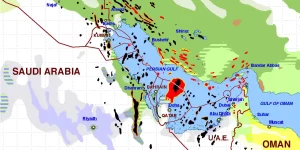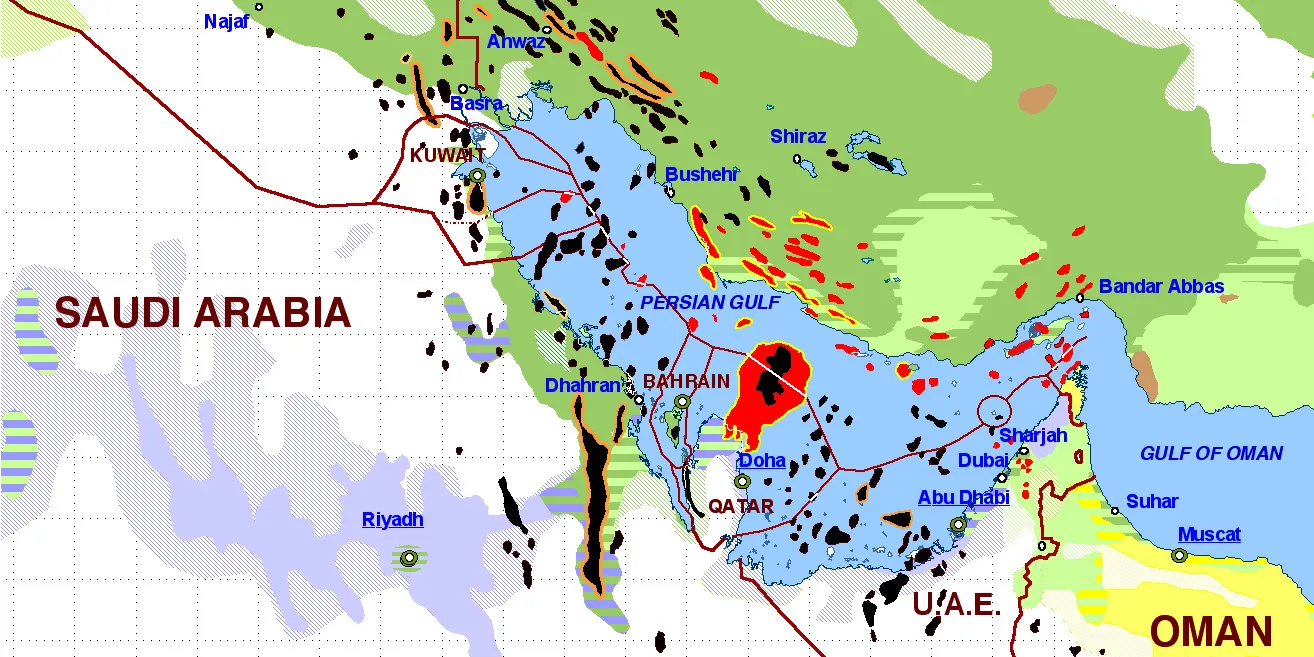The Persian Gulf is one of the world’s most significant regions for oil and gas reserves, playing a pivotal role in global energy markets. The seabed is dotted with numerous fields that are rich in hydrocarbons. Countries surrounding the Persian Gulf, including Saudi Arabia, Iran, Iraq, Kuwait, and the United Arab Emirates, host the bulk of these resources. The region’s strategic importance is underscored by its vast reserves; it holds a considerable percentage of the world’s proven oil reserves and a significant portion of natural gas reserves. The extraction and export of these resources are central to the economies of Persian Gulf countries, with many of them being members of the Organization of Petroleum Exporting Countries (OPEC). The Persian Gulf’s oil and gas fields are critical to meeting global energy demands, but they also present geopolitical and environmental challenges, highlighting the need for sustainable approaches to energy extraction and consumption.

source: https://theintercept.com/2016/01/06/one-map-that-explains-the-dangerous-saudi-iranian-conflict/
The Persian Gulf is renowned for its vast hydrocarbon wealth, with several key players in the region commanding substantial oil and gas fields.
Saudi Arabia claims ownership of the Ghawar Field, the world’s largest onshore oil field, and the Safaniya Field, the largest offshore oil field globally. These fields are situated in the Eastern Province of Saudi Arabia and are integral to the country’s oil production capabilities.
Iran, another major oil producer in the region, boasts significant fields such as the South Pars/North Dome Field, which it shares with Qatar. This field is not only the largest gas field in the world but also contains significant oil reserves.
Iraq‘s supergiant oil fields include Rumaila, which is considered the third-largest oil field in the world, situated in the south near Basra. Additionally, the West Qurna Field is also among the country’s largest reserves.
Kuwait‘s Burgan Field is recognized as the second-largest oil field in the world, a crucial asset for the country’s export-oriented oil economy.
The United Arab Emirates (UAE) also contributes to the Gulf’s oil wealth, with the Zakum Field being one of the largest in the UAE and the world. This field is located offshore, near Abu Dhabi.
These extensive fields make the Persian Gulf a focal point for the world’s energy needs, and the countries that control them are pivotal players in the international oil and gas markets. The exploration and exploitation of these resources have significant economic implications for the region and the global energy landscape.

